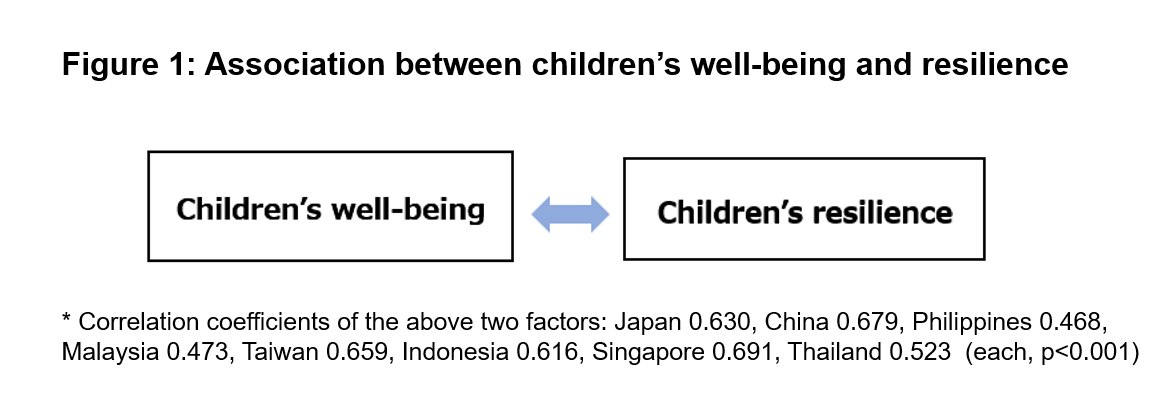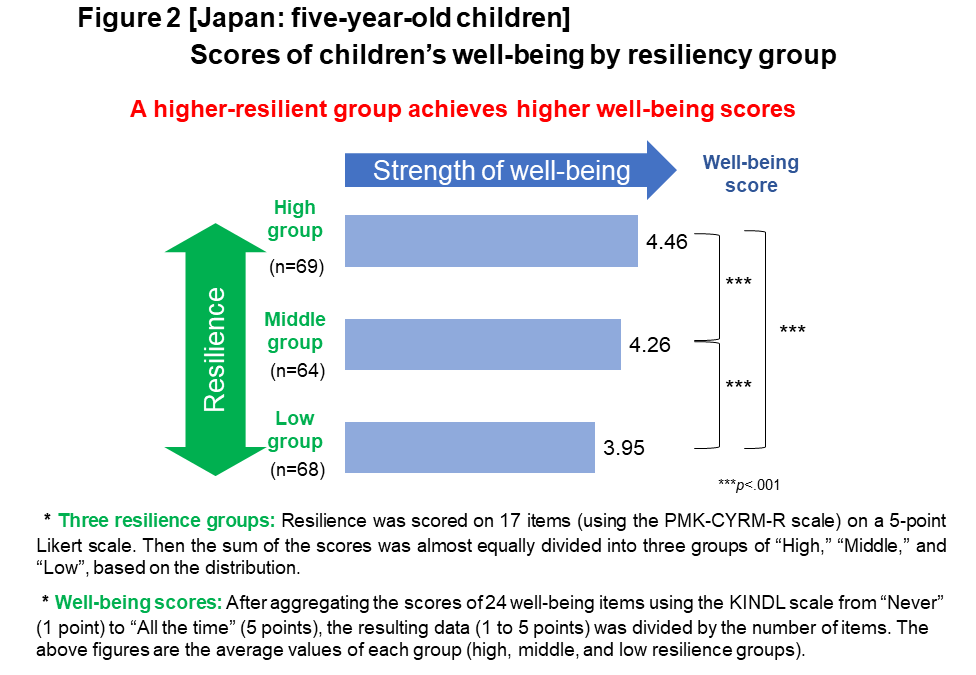Survey Background
About three years have passed since December 2019, when the first COVID-19 case was reported in Wuhan, China. Nevertheless, even now in September 2022, the pandemic still threatens people's everyday lives as well as children's daily activities and learning.
Between August and November 2021, Child Research Net (CRN) conducted the "Survey on Children's Daily Life among 8 Asian Countries 2021."* This survey was aimed at mothers with children aged five or seven in these countries, including Japan. According to previous surveys and research studies, large numbers of children have been suffering from physical and mental disorders due to the persisting impact of the pandemic, with detrimental effects on their well-being (sound physical and mental health and happiness).
This survey was conducted through collaboration with researchers from eight Asian countries, aiming to determine the actual conditions of children's well-being during the COVID-19 pandemic. We primarily focused on children's resilience (the capacity to adapt and recover from adversity), which is considered an integral factor in attaining their well-being. Based on common factors and differences identified by international comparison analyses, our purpose was to formulate measures suitable to the situations of each country.
* Participating countries: Japan, China, The Philippines, Malaysia, Taiwan, Indonesia, Singapore, and Thailand
What is well-being?
First, I will explain the definitions of critical terms before reporting our survey results. The term "well-being" means individuals' sound physical and mental health and happiness. This survey used the KINDL scale to measure children's well-being. The KINDL was developed by Ravens-Sieberer and Bullinger to assess the QOL (quality of life) and consists of the following six subscales: physical well-being, emotional well-being, self-esteem, family relationship, friends (social contacts), and everyday functioning (schools/childcare facilities).
What is resilience?
The term "resilience" refers to the capacity to adapt and recover from adversity, which is also referred to as the ability to bounce back, achieve mental recovery, flexible strength, or undaunted spirit. According to previous research studies, the strength of mind is divided into two types, "resilience" and "hardiness," as described below. Our survey focused on resilience, not hardiness.
Two types of "Strength of Mind"- Hardiness: the capacity of robust resistance to bounce back, without being influenced by stress.
- Resilience: the capacity to adapt flexibly and recover from adversity and stress.
Resilience has two aspects: "resilience in adversity" and "resilience in daily life." The former refers to the ability to bounce back and recover from disasters, illness, and other hardships. In contrast, the latter refers to the ability to bounce back and recover from demanding and stressful situations encountered in daily life. The term "resilience" first drew attention in Japan when the results for the OECD Programme for International Student Assessment (PISA) were published. In the assessment report, students who achieve good academic scores despite having a disadvantaged socioeconomic background were referred to as "resilient students." The concept of resilience became widely known in the Japanese educational community, partly prompted by this description.
The public also widely used the term "resilience" in the context of disaster reconstruction in the days following the Great East Japan Earthquake. In addition, the OECD's report titled "Educating 21st Century Children," published in 2019, positions "resilience" as one of the vital skills to survive the 21st century, like socio-emotional skills and digital literacy. Moreover, after 2020, when the COVID-19 pandemic had the effect of causing a stressful life to children, the term "resilience" often appeared in the news in English-speaking countries.
Our survey used the PMK-CYRM-R scale developed by the Resilience Research Centre in Canada to measure children's resilience. This scale has two sub-scales of "Personal resilience" and "Caregiver resilience."
The development of resilience is essential for children's well-being during the pandemic
Now, I will explain the results of our survey. The survey targeted mothers with five-year-old or seven-year-old children. In this report, to avoid being discursive, I will show the analysis results based on the extracted data of five-year-olds.
The analysis results revealed that children's resilience is closely related to their well-being in all eight Asian countries (Figure 1). In other words, higher resilience scores relate to higher well-being scores. We extracted the data of Japan from those of eight countries, and analyzed it, as is shown in Figure 2. The same tendency was observed in all eight countries.


These results indicate that it is important to foster children's resilience in order to maintain their well-being under challenging circumstances such as the COVID-19 pandemic. In the next chapter, I will discuss the factors that encourage children's resilience , based on our survey results.
References
- Seiko Mochida, Mieko Sanada, Qinfeng Shao, Jiwon Lee, Junko Takaoka, Satoko Ando & Yoichi Sakakihara. (2021). Factors modifying children's stress during the COVID-19 pandemic in Japan, European Early Childhood Education Research Journal, DOI: 10.1080/1350293X.2021.1872669
- Office of Quality of Life Measures https://www.kindl.org/english/information/
- Oshio, A., Hirano, M., & Ueno, U. (2021). Psychology of Resilience. Kaneko-Shobo.
- Kobayashi, T. ed. (2019). A resilience workbook to nurture resilient children. Higashiyama-Shobo.
- Masten, A. S., Best, K. M., & Garmezy, N. (1990). Resilience and Development: Contributions from the Study of Children Who Overcome Adversity. Development and Psychopathology, 2, 425-444.
- OECD, 2011, PISA IN FOCUS
https://www.oecd.org/pisa/pisaproducts/pisainfocus/48165173.pdf - OECD's Centre for Educational Research and Innovation, Oct. 1, 2019,
Educating 21st Century Children Emotional Well-being in the Digital Age
https://www.oecd-ilibrary.org/education/educating-21st-century-children_b7f33425-en - Resilience Research Centre
https://cyrm.resilienceresearch.org/















